Thursday dawned another lovely misty morning. Good. No rain for our trip through the Iron Gorge.
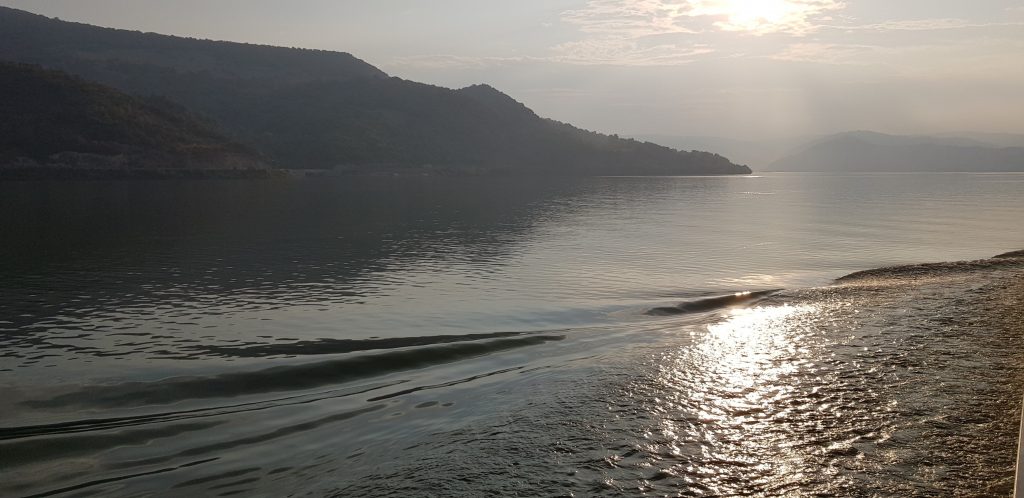
All on deck for a commentated transition through the gorge.
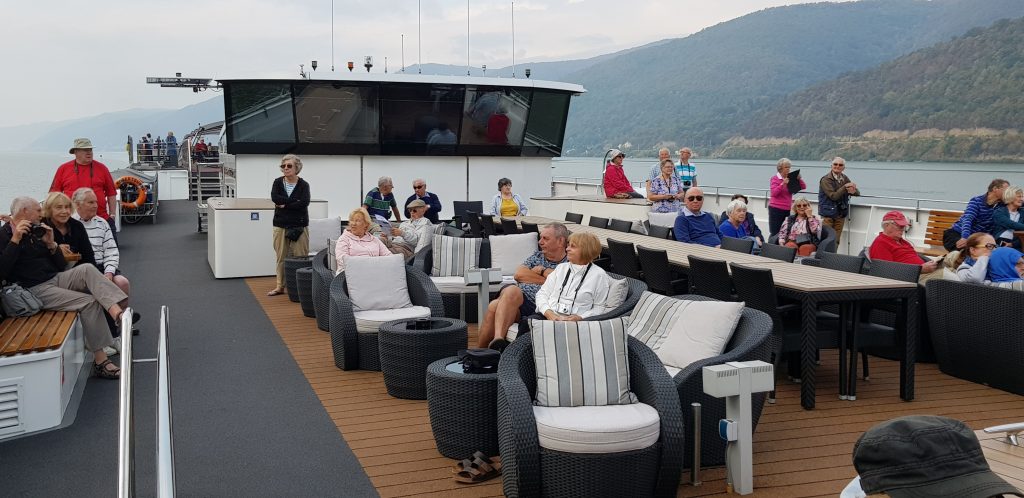
Entering the gorge…
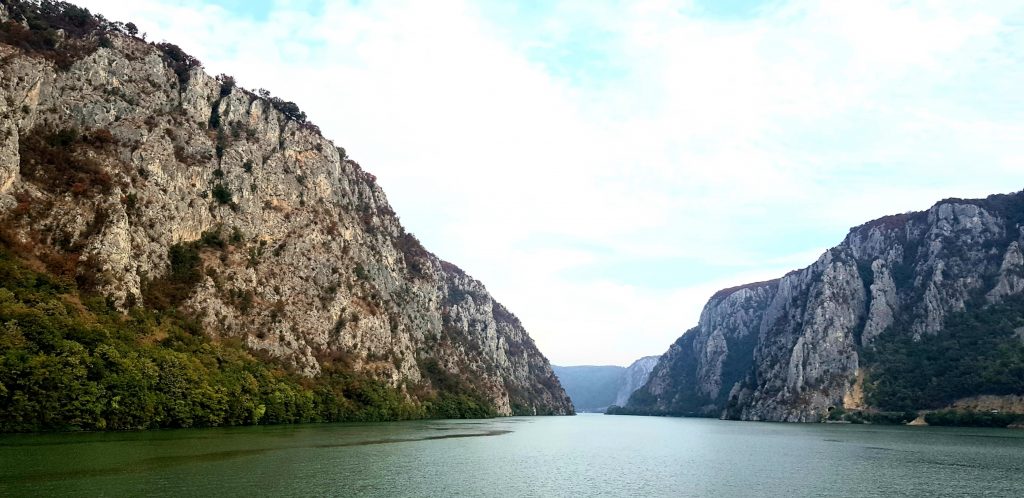

Passing one of the control stations (actually they were churches as well we found later) whose job it is to prevent collisions in the gorge!
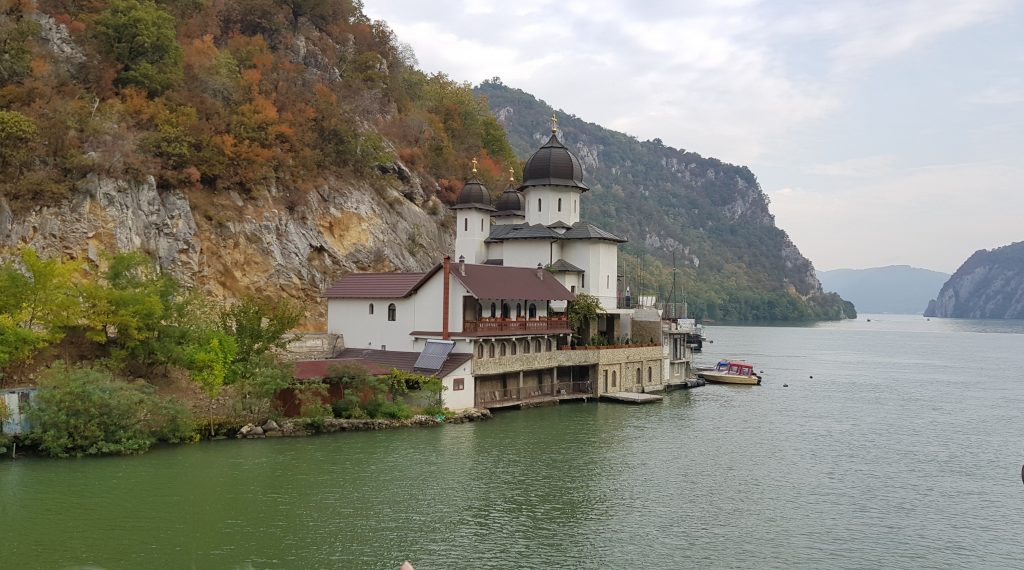
… and our first view of the massive carved face of King Decebalos.
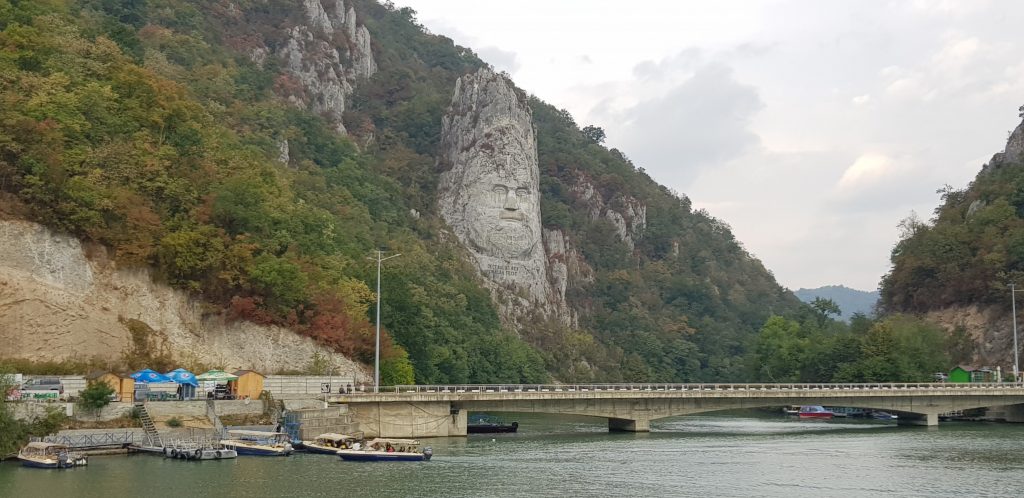
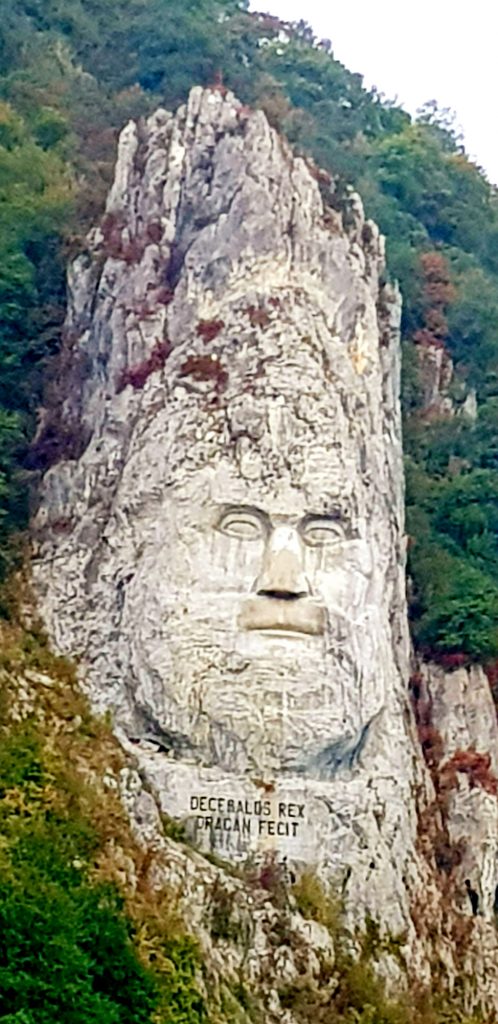
The rock carving of the face of King Decebalos is 43 m (141 ft) in height and 32 m (104 ft) in width. He was the last king of Dacia (AD 87 – 106). He fought against the Roman emperors Domitian and Trajan to preserve the independence of his country, which corresponded to modern Romania. The sculpture was made between 1994 and 2004. It is the tallest rock relief in Europe. To put it in perspective, the faces of the US presidents at Mount Rushmore are “just” 18 m (60 ft) tall! It is the tallest rock relief in Europe. However, I remain to be convinced about the measurements. Depends where you measure from!
The Danube is dammed just downstream of the carving. We were promised one of the deepest locks in Europe with a drop of as much as 55 metres.
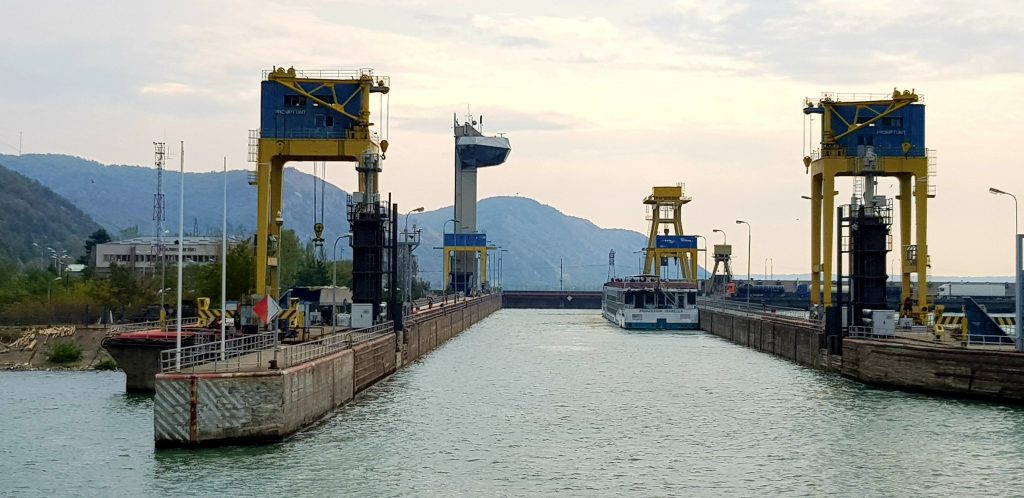
In the event, it was a bit of a cheat because the lock was a two stage affair and with the current low water levels was only about 45 metres in total. Still pretty impressive though!
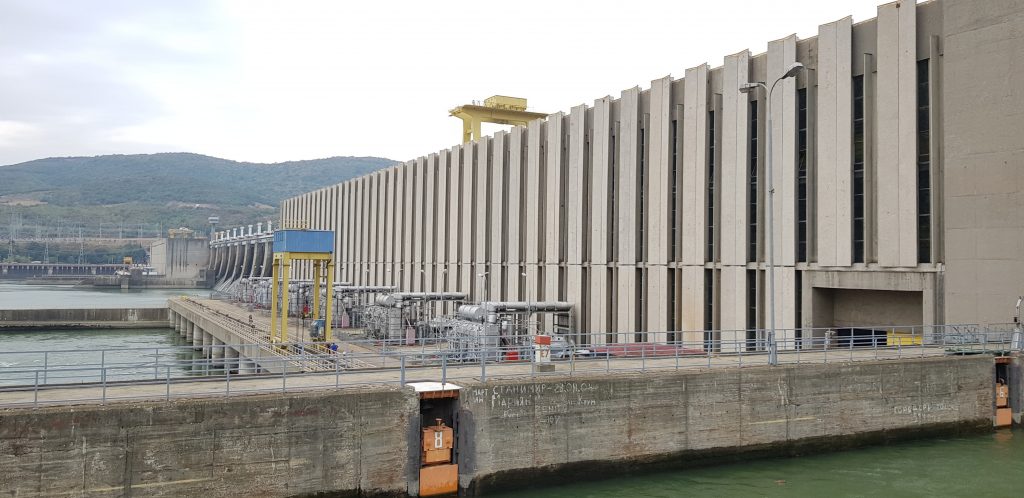
As was the hydro electric scheme associated with the dam. It was made possible by a co-operative action from Presidents Tito and Ceauşescu. They only had to displace about 17,000 inhabitants! No problem. “Just move!” (It might even have been 23,000! depending on who you listen to.)
The Romanian side of the power station produces approximately 5.24 TWh annually, while the Serbian side produces 5.65 Twh. The discrepancy in power output between the two halves is due to the generating equipment. While Romania’s equipment is apparently newer and thus more efficient (thereby generating more power), it is proving more unreliable; resulting in increased downtime for maintenance and repairs and, consequently, lower annual power output overall. You win some and you lose some!
Tito may have been a dictator, but he appears to have been held in some esteem by the general population. Certainly more so than his opposite number in Romania. Ceauşescu seems to have been wiped from collective memory. There are apparently virtually no memorials to him and his much hated family. Tito, (Josep Broz Tito, President of Yugoslavia) on the other hand is remembered for many of his achievements – for instance at the Iron Gate hydro electric scheme there is still a flag and huge plaque with Tito’s name on the bank.
In Trajan times, cargo ships would sail one way downstream to the Black Sea. There the cargo would be sold and the ships broken up for timber. It was just too difficult to sail back upstream. I guess the crew would have to fly home on Bryan Air or Squeezy Jet. Or maybe just walk home!
At either end of a short narrow section (just upstream of the Decabalos carving) there is a church high up on the banks. Here boatmen used to pray for a safe passage. Also, depending on how the curtains were arranged in the windows (or lights at night), the traffic would know whether it was safe to pass or not. Before the damming of the River the flow rates through the gorge could reach perhaps 20 kms per hour. (We were told 30 kph but I find that hard to believe!)
In AD 107, Trajan built the biggest bridge in the world at that time. It was about 1000 metres crossing the Danube. All that is left today are a couple of ruined towers on the Romanian bank.
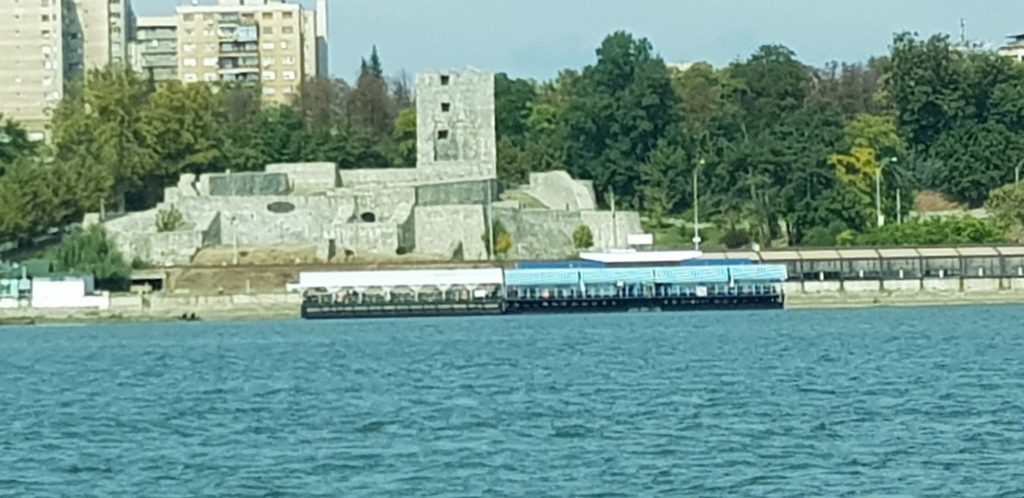
At the time we passed here we still had 972 kms to go the Black Sea. But as I write this we are passing through the same region on the way back to Budapest. Some 1900 kms later!
On the coach journey from Nikopol to Pléven we saw the disastrous effects of rural de-population. There are hundreds of dilapidated, tumble-down houses with totally overgrown gardens in the country villages. Ruins, collapsed rooves, broken or missing windows and doors. All very sad and poor-looking. Apparently we could buy one for €1000. For €4000 we would get a house in good order with a very large patch of ground. Bargain! That is, if you want to live in deepest, rural Bulgaria.
Apparently there is a state-sponsored competition in the country. There are 100 designated sites which Bulgarians should visit at least once in their lifetime. The prize for visiting all 100 can be a very significant – like a car! Maybe not this one!
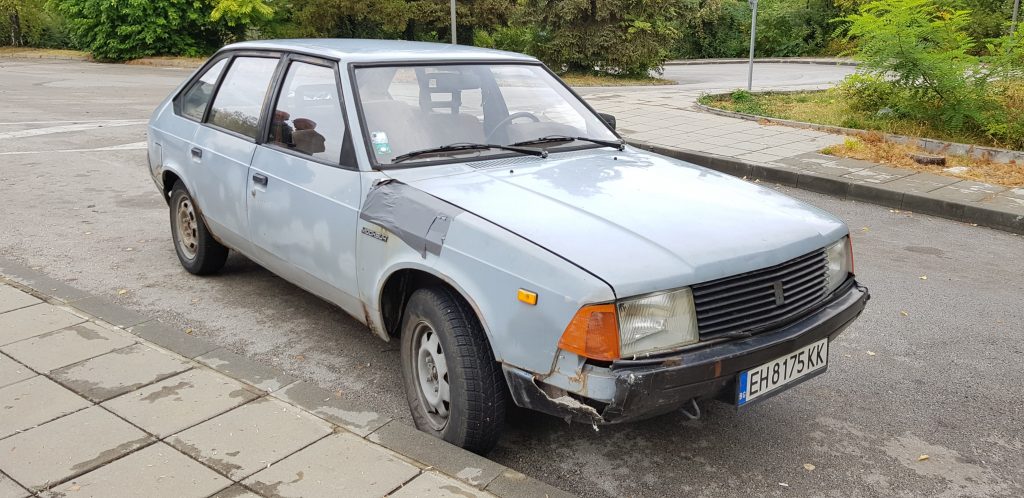
The problem is that the authorities keep altering the list. You can get to 99 and suddenly find 20 are no longer on the list having been replaced by 20 different things. You still have 21 more to visit!
If I heard our guide correctly, Bulgaria is the European country which has existed with the same name for the longest time. Allegedly!
We heard (from several of our guides) about the problems associated with the Communist era and its subsequent collapse. The stories varied slightly between the countries we visited on this trip (Hungary, Croatia, Serbia, Romania and Bulgaria). However, the common theme was that after WW2 all property and land was “nationalised”. Co-operatives were established to run factories and amalgamated farms. These ensured full employment. But the factories often made stuff of sub-standard quality, not on time and which people didn’t want or need. They did all this at un-economic prices. The education and health services were free and available to all. But not necessarily of a very high standard. State wages were incredibly low, (we heard figures as low as $3 per month??). Produce was very limited in availability – to buy bread you had to queue for hours – and to purchase fuel the queues could be up to FOUR days. That would have added a certain delay to any trip…
After the various revolutions which ended the communist rule in about 1989, the factories were returned to the original owners who immediately went bankrupt because people wanted different things, of better quality, when they needed them and at a lower price. This explains the enormous (unbelievable actually) number of derelict industrial buildings to be seen everywhere.
Generally, land was denationalised in the early 1990s. By this time many property owners had died, been deported or just relocated to the cities and towns. Many had no interest in returning to their small holdings and these were either abandoned or sold and amalgamated with other parcels of land. These were managed as “voluntary cooperatives” which gave the advantages of scale so farm machinery could be used. This in turn has resulted in enormous fields with patches of abandoned land where, presumably, ownership is unknown.
It is true to say that the agricultural machinery we saw is still often pretty antiquated. But, to make up for that, every village has a granite statue of a bear!
And so to Pléven. The town has two claims to fame. Firstly it boasts one of longest pedestrian zones in Europe at three kms. This ends at a fountain complex and a large church-like structure.
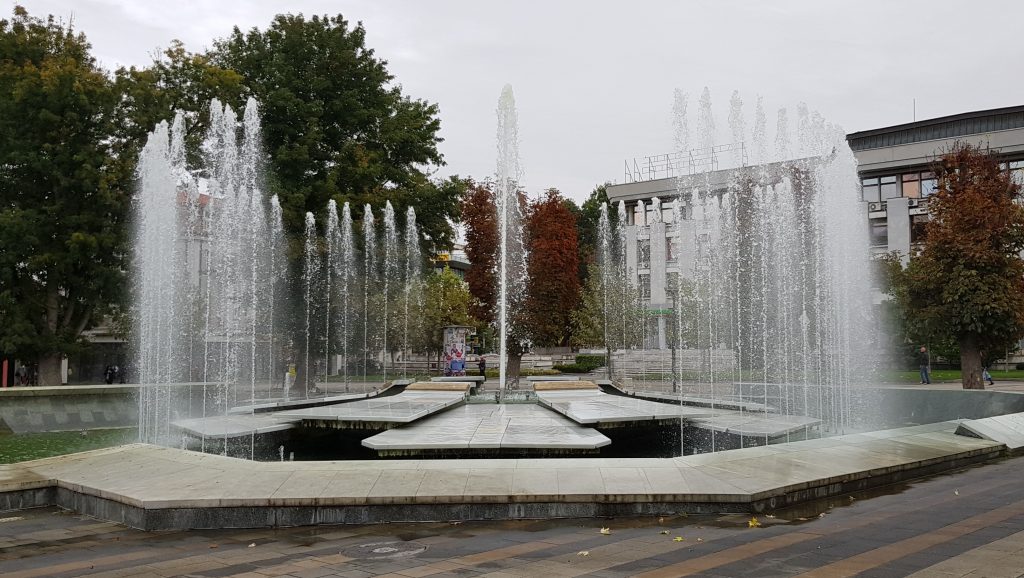

The second thing – and the one that most visitors come to Pléven to see is perched on the hill overlooking the town. The Panorama. A memorial to the.third (we need to ask Bruce about that) battle of Pléven in 1877. Outside it looks a rather ordinary tower…
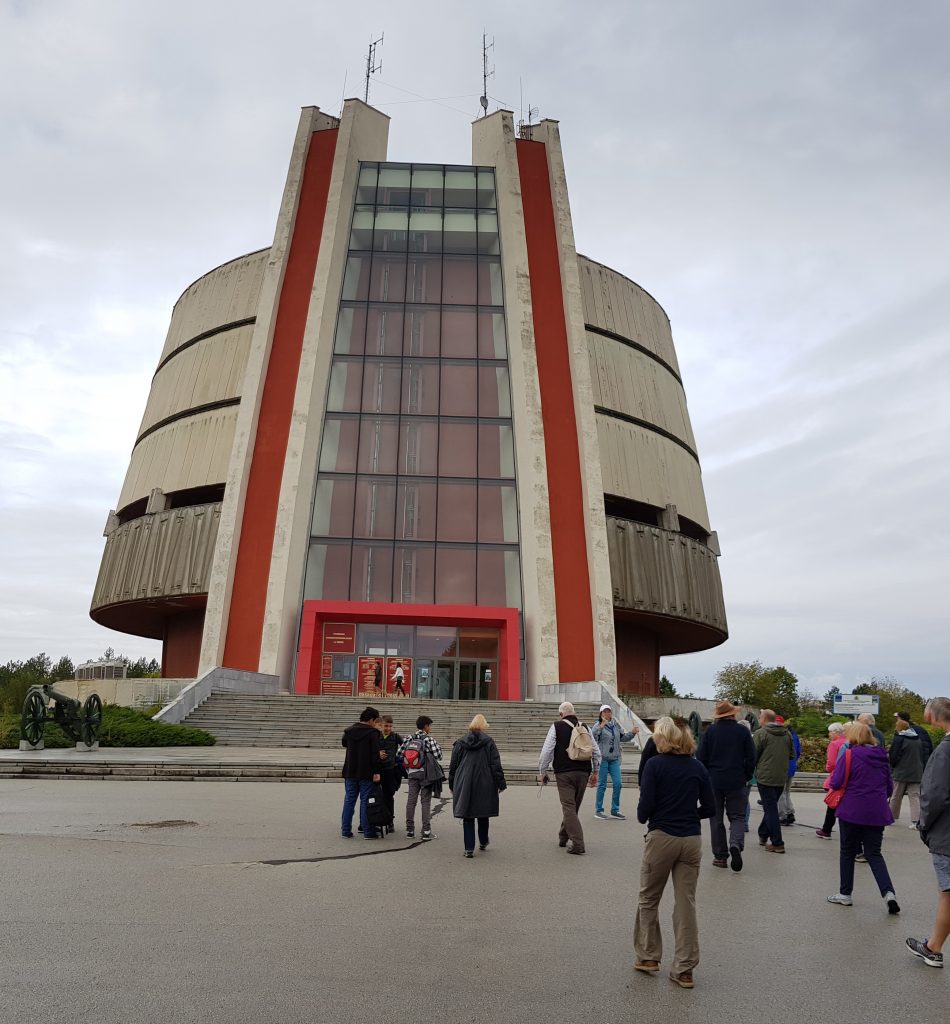
… guarded by old guns…
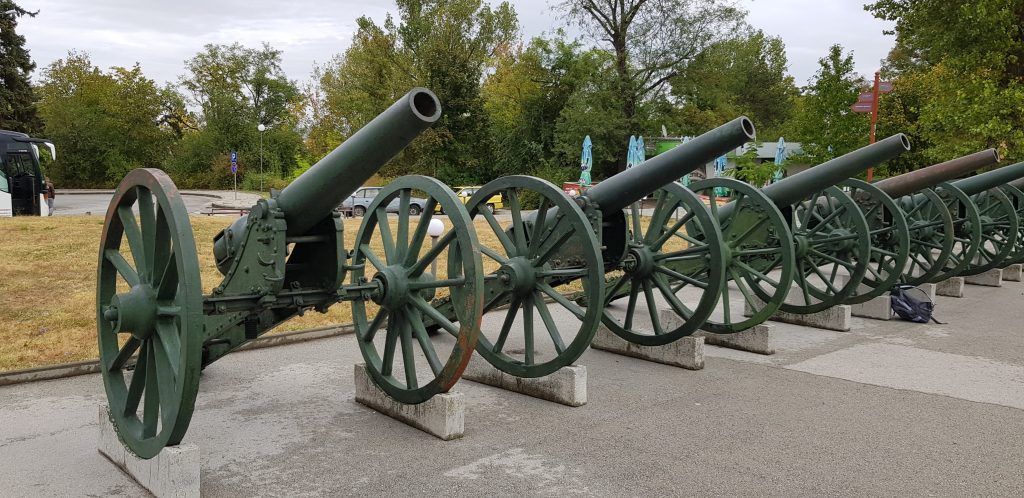
But inside and up a hundred steps there is a magnificent 360 degrees panoramic representation of what was clearly a very confused battle which raged for several days. In the foreground there are a lot of articles found on the site. Behind this – and orientated exactly with the external view (had there been one) – is a very detailed mural. Together these two elements make an amazing display.
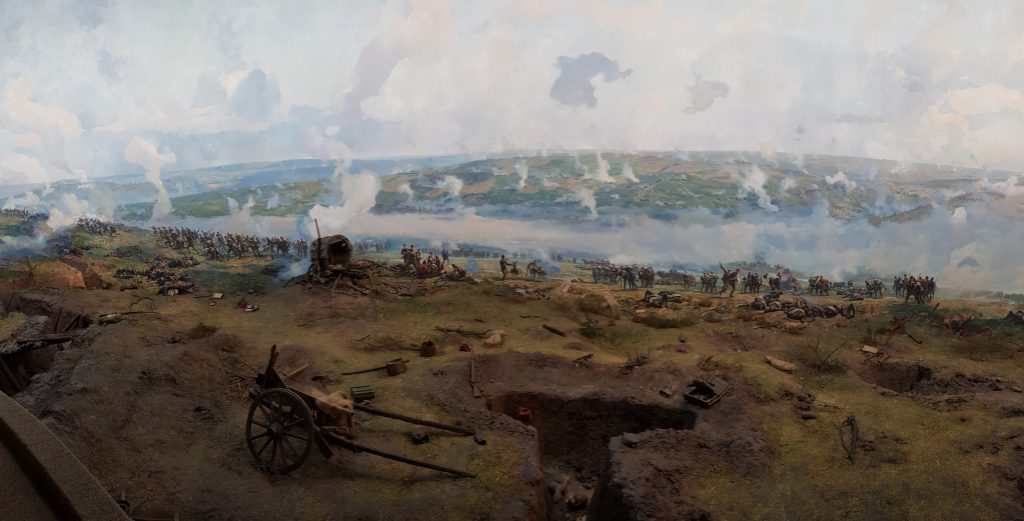

It must have been extra difficult because both the Russian and the Bulgarian soldiers wore almost identical uniforms. Basically they were either blue or slightly greenish blue! “Excuse me, but which side are you on….?”
It’s day six and therefore Bucharest tomorrow. 90 minutes by road to “Paris of the East”.
To be continued…
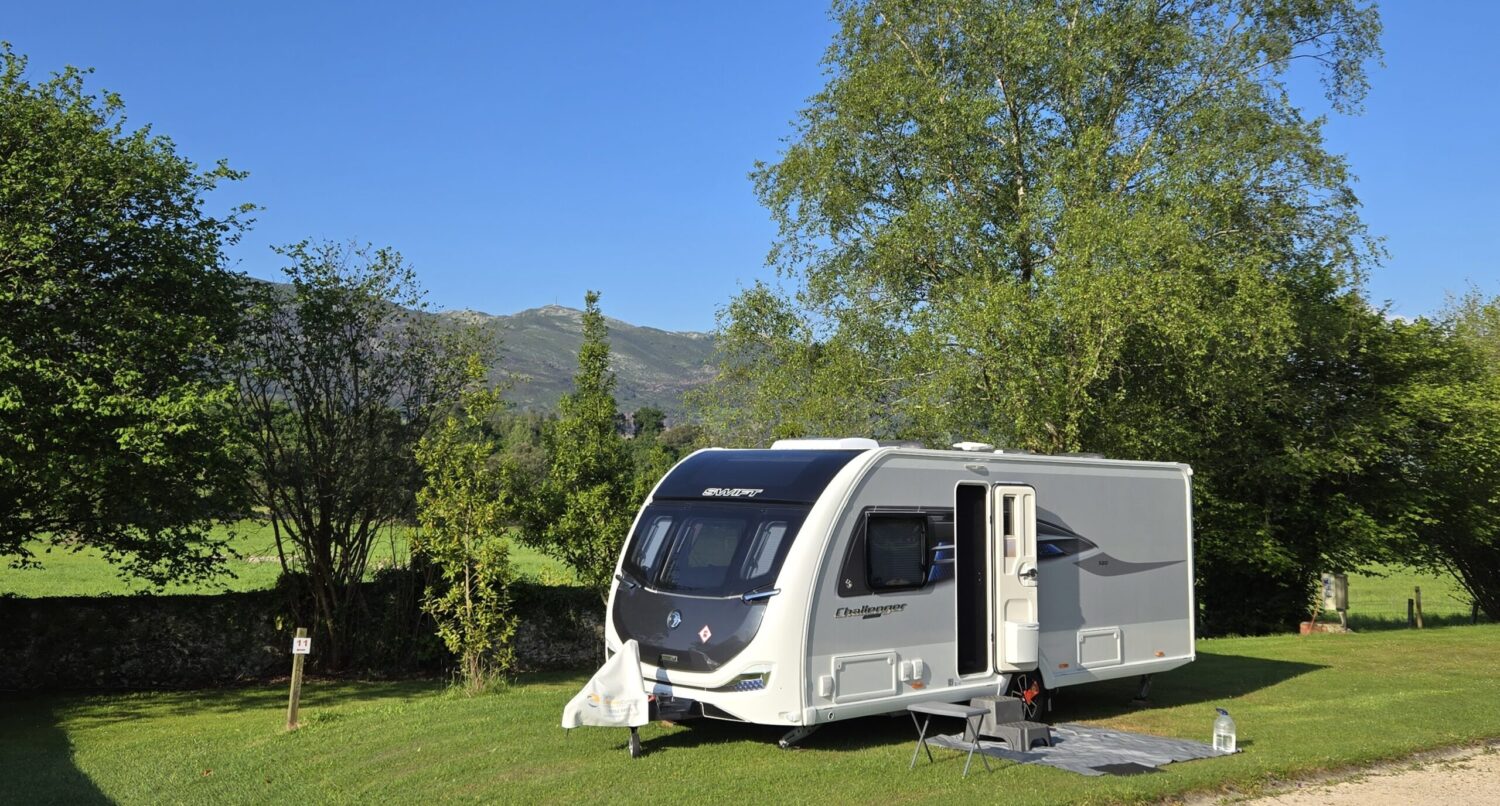
I think King Decebalos look remarkably like you John. Just a wonky hat and a silly grin it would be a dead ringer.
At last we have caught up with your blogs……always a very good read. Haven’t been to that part of the world as yet….closest was driving a few kms across Serbia travelling from Split to Dubrovnik.
Hope you are both well and have your surveillance cameras/lights sorted?????
Big hugs and 7 kisses xxxxxxx
Enjoying your travelogue, but not sure it is a part of the world I would want to visit